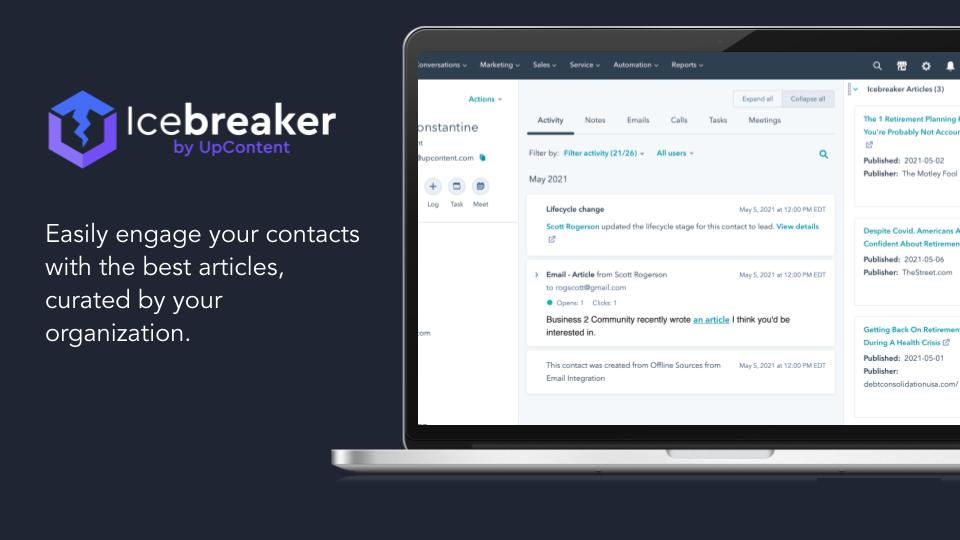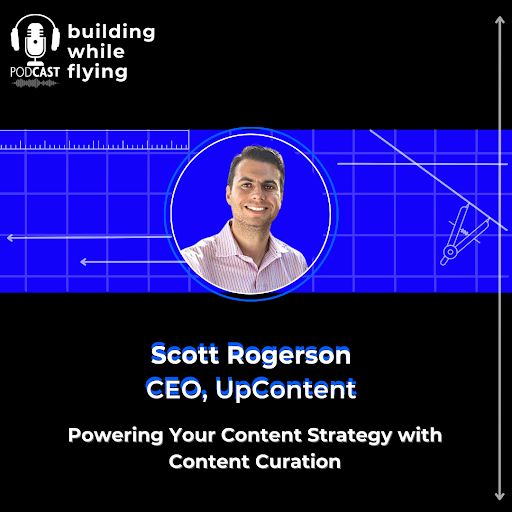Is It Ever OK to Send Shoppers Away From Your eCommerce Store?

With the rise of content marketing, conventional wisdom regarding eCommerce is being challenged.
Content frequently links readers to outside sites, pushing them away when the goal is ostensibly to pull them in.
How does an eCommerce marketer deal with these contradictions? Is it ever okay to send shoppers away from your website?
In this post, we'll take a look at the changing face of eCommerce, and how it isn't that much different from the way brick and mortar stores have always worked.
Conventional Wisdom
For the longest time, linking customers away from an eCommerce site was considered a big no-no.
Marketing, as the conventional wisdom goes, is all about bringing customers into your funnel.
Content marketing, of course, is one way of trying to bring people into that funnel. Sending them away from your site is allegedly sending them right back out the mouth of the funnel.
So many marketers have this notion that your content marketing should always keep the customer on your site.
The problem with that philosophy is that it ignores many of the reasons that content marketing can be such a powerful force to begin with. In other words, conventional wisdom is flawed.
Why People Visit eCommerce Sites
As a marketer, you like to think that everyone who visits your eCommerce site is doing so to purchase something from you.
This couldn't be further from the truth. Think of all the times you've found yourself on a site like Amazon looking at a particular product. Chances are, more often than not, you didn't intend to purchase the product at that time.
Amazon, like many eCommerce sites, is a resource. It allows you to read product descriptions so you can compare brands, read user reviews to help you decide on a particular brand, and explore the options available to you in the category of product you are looking for.
Very frequently, people are visiting an eCommerce site for reasons other than immediately making a purchase.
Catering to People Who Don't Convert
To fully drive the last point home, let's look at your typical conversion rate. It's a safe bet to say that you aren't converting anywhere near 100% of your visitors.
That number is probably in the single digits. Is that a low conversion rate because your products are so horrible they appeal to less than 10% of the people who visit your site? Of course not.
The low conversion rate is because people are coming to your site for other reasons. They are using your site as a resource of some sort. But, those people may eventually purchase the thing they are researching.
If you can be the site that they continually come back to for information, you stand a good chance of being the one they purchase from.
Not Every Brick and Mortar Store is Costco
Brick and mortar stores understand this concept intuitively.
They even have a name for it: window shopping. If some hot new technology comes out, big box stores know that there will be lots of people coming into the store to take a look at the new product and see what it's all about.
They are doing exactly what the visitors to Amazon we talked about earlier are doing. Yet when you go into Best Buy, they don't lock the doors and force you to buy something before you leave.
Instead, they make you feel as welcome as possible and try to be as helpful as they can. Major brick-and-mortar retailers go out of their way to create an enjoyable shopping experience.
The exception to this is warehouse stores like Costco; a relatively rare business model that focuses on providing products as cheaply as possible, with little concern for shopping experience or even convenient package sizes.
The Folly of Price Wars
Costco's entire value proposition is being very cheaply priced. They still don't lock you in the store until you buy something, but they are doing very little to make you want to do anything other than spend money with them.
They are selling you products, not an experience. When that latest tech gadget comes out, you aren't very likely to head to Costco or Sam's Club to ask the employees there about how it works.
They won't be particularly helpful. Having affordability as your only value proposition can work for huge mega-brands like Costco and Sam's Club, but in eCommerce, there are far too many competitors for that to be a game you can win for very long as a small to medium-sized business.
The Luxury Chocolatier
Standing in stark contrast to Costco is Marsatta Chocolate. They are a luxury chocolatier that charges significantly more for their product than the chocolate you'll find on the aisles of Costco.
Their value proposition isn't cheap chocolate. It isn't even really their delicious, high-end chocolate that makes up their value proposition. Instead, it's their love of chocolate.
When you go into a Marsatta location, you'll find a staff who can tell you what type of chocolate pairs nicely with your favorite cigar, or your preferred type of wine.
You go to the corner store when you want a chocolate bar. You go to Marsatta when you want a chocolate experience.
What Can You Offer Customers?
As an eCommerce business, you need to stand out. One of the reasons for doing content marketing in the first place is to drive more visitors to your site from search engines; to stand out in the list of search results.
But you can't just stand out in the search results. After you get the customer to your site, you need to stand out in other ways.
With giants like Amazon and Walmart in the eCommerce space, your chance of being the low price leader is slim to none. But you can provide your customers with a much more enjoyable user experience than either of those two sites does.
But you can be the next Marsatta Chocolate.
"Probably the vast majority of [...] visitors never had an intent to purchase when they made their way to the site. They were looking for something else and so you need to provide them that information." — UpContent CEO, Scott Rogerson
Using Content to Build Brand Loyalty
When you cater to the over 90% of people who don't buy from your site when they visit just as much as you cater to those who do, you are fostering a brand. Whenever those people need to find out expert information on your area of business, they'll think of you.
When you become a resource that they can go to for all their knowledge needs, you'll position yourself to be the brand they go-to when it's finally time for them to make a purchase.
You can become that resource by providing visitors to your site all the information they need to learn what they want to learn, regardless of whether you send them away to learn it or not.
The Need for 'Hygiene' Content
Content marketing can be broken down into hero, hub, and hygiene content. Put simply, hero content is the large tent pole of your content creation.
Hub content are the supporting poles. Hygiene is the content you produce to keep your site fresh. Because so much of this content is required, it's common to use third-party content.
This means linking out to other sites. We've already seen how this isn't a bad thing, because it helps build brand loyalty and keeps visitors coming back to your site as a source of information. Let's talk now about two other ways it can help.
- External Links as Validation — There have been several studies extolling the health benefits of chocolate. Going back to our chocolatier example, that news would be much less compelling coming from someone who makes chocolate. Of course, they're going to say it's healthy. Linking to third-party, reputable sites, however, provides an extra measure of authority to what is essentially a sales pitch for the company's product.
- External Links as SEO — Search engines want their users to get accurate and useful information. As a result, they heavily favor sites that are linking to (and are linked from) other highly authoritative sites. It may seem counterintuitive, but by providing links to reputable sources that send visitors away, you're also helping to bring more visitors in through improved page ranking.
Conclusion
Long ago, there may have been some logic to the claim that you should work hard to keep your customer closely guarded in your funnel.
If it ever did hold, it certainly doesn't with the way modern eCommerce sites are used. Instead, anyone who can't sell at rock bottom prices is better off becoming a hub of content that visitors can rely on.
UpContent is a content curation platform that makes it easy for you to find articles related to your field that you can share with your readers.
By using UpContent, you'll be able to provide your visitors with all the latest information about the products and services you provide and the industry surrounding them. Best of all, you'll be able to do it with much less work than manually searching for items to post.
Want More?
This piece was inspired by a conversation with >JetRails Director of Partnerships and Alliances, Robert Rand and UpContent CEO, Scott Rogerson.
Image Credit: "Small Business Marketing Solutions Stockton CA" by thestrategicdigitalmedia is licensed under CC BY-SA 2.0



